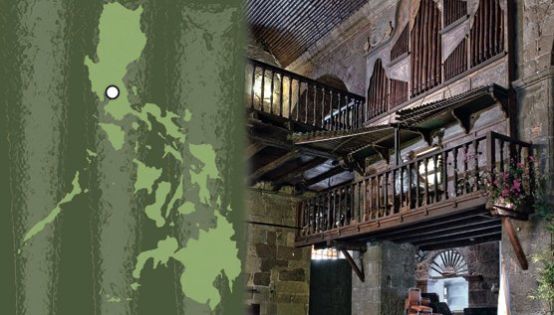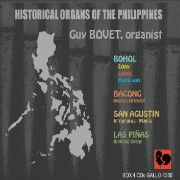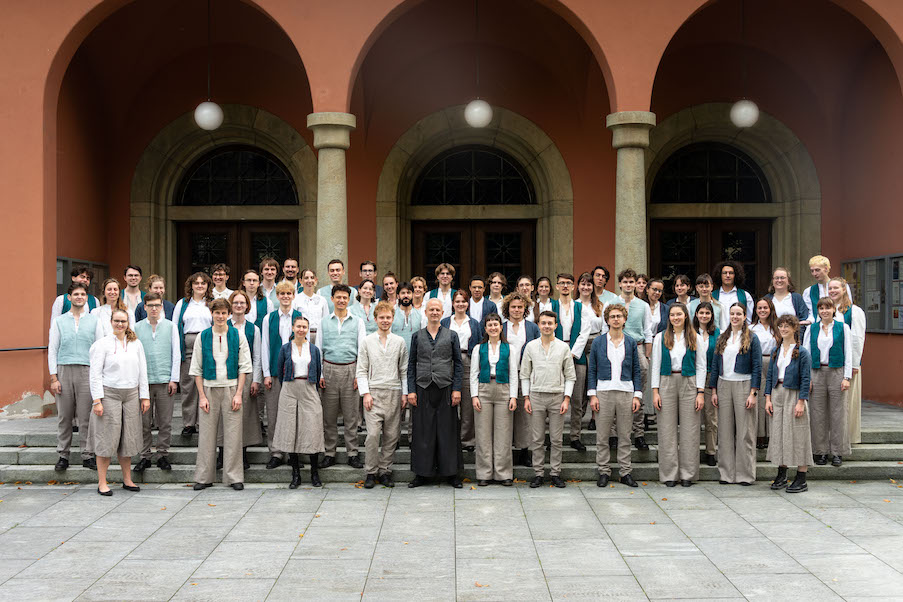Historic organs on the other side of the world
Guy Bovet introduces us to Spanish-influenced instruments and a bamboo organ from the Philippines.

Loyal subscribers to Organ Tribune have known it for a long time: the author of the Stories - Travelsigned Mr. Philéas Fogg, is not Jules Verne, nor is it anyone other than editor-in-chief Guy Bovet! Back in the seventies, our organist-traveler par excellence set off for Mexico with Claude Maréchaux, his favorite sound engineer, both heavily laden with delicate recorders and magnetic tapes... And when they got there, various practical obstacles presented themselves. Nevertheless, these pioneering recordings (released by VDE on LP, cassette and now on three CDs) remain a benchmark in the field of Mexican historical instruments.
Some forty years later, on the scattered islands of the Philippines, Philéas continues his journey with his faithful sound engineer. While the digital equipment is lighter and the family team of "assistants" larger, the challenge remains to overcome countless difficulties on location. In Las Piñas, for example, we had to work through the night, suffering from fatigue and various ailments, and in the midst of a deafening traffic noise. We had to, to quote Guy Bovet, "chase away the dogs, keep the chatterers and onlookers away and beg the police to stop the traffic for a few minutes" before we could pick up the bamboo organ.
This magnificent box set, Historical Organs of the Philippines (4 CDs, available separately), discover the Spanish-influenced organs of Bacong, San Agustin Intramuros in Manila, Loay, Loboc and Baclayon on the island of Bohol, or the bamboo organ of Las Piñas. Thanks to the impressively authentic sound recordings, the diversity of registrations, in a wide range of acoustics, is highlighted, making you want to consult the booklets. There are photographs, taken inside and outside the churches by Claude Maréchaux, and texts by Guy Bovet, who describes with his legendary pen the origin of the old pipes, designed by Father Diego Cera (1762-1832), as well as the factory, which still bears the name of this religious figure. We also read about the origins of the performer's musical choice and the composition of each of the six instruments.
What better way to explore the evocative, Spanish-inspired pieces, such as Lo Ballo dell'Intorcia, La vida és un fandango, Batalla de sexto tono or even, Obra de octavo tono Timbalesnot to mention theTribute to the Philippines (improvisation by Guy Bovet). Our guide is so unpredictable, spontaneous and teasing! He delights in the hair-raising chamades and undulating flutes - which sound like glass harps, the "trilling" timpani and the pajaritos - artificial birds that blend in perfectly with the real thing, sometimes mingling with the cries of children playing outside. Four hours of pure joy!
No! The CD is not ready to die. And neither is Philéas Fogg!
Historical Organs of the Philippines. Guy Bovet. Set of 4 CDs, VDE-Gallo 1360
Bohol organs (1361)
Bacong (1362)
San Agustin (1363)
Las Piñas (1364).








